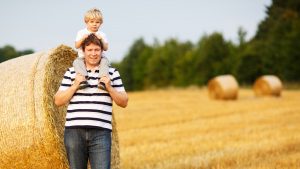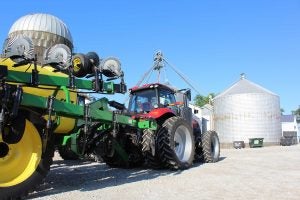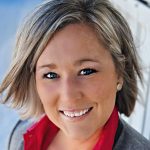Ranchers, farmers, and small business owners are unique in so many ways. They have a brave and independent spirit that moves our country forward. They also have unique financial situations.
Most have high proportions of non-cash assets and business equity on their personal balance sheets. They also are often inclined to sacrifice personal income or savings to invest in the business or ranch. Because of these unique factors, very few farmers and ranchers save for retirement in the traditional sense. According to the U.S. Department of Agriculture, only 7 percent of farmers and ranchers contribute to a retirement plan. The Small Business Administration estimates that only about a third of small business owners contribute to a retirement account.
A lack of cash or liquid assets can pose some major challenges, not only in funding a retirement but also in planning for an exit or family ownership transition. When the owner’s largest personal asset is business equity, it puts constraints on how they may consider divesting from that equity and therefore limits options for future planning.
We can solve this problem if we have conversations around re-framing the way these business people view savings and investment. With this in mind, I will discuss three ways to think about retirement savings.
1. It should be treated like any other business or ranch/farm expense.
Building a liquid asset cushion not only benefits the owner personally, it can also offer significant tax benefits to the business. Depending on tax/corporate structures, there a qualified account types that can offer tax deductions to the business. SEP and SIMPLE IRA accounts may be good options for small business owners or agricultural producers.

Both account types also have tax deferral features for participants. It is also my opinion that these tools are particularly underutilized by ranchers and farmers. This is not tax advice, and anyone considering this should consult a financial professional and your tax professional to analyze the costs and benefits of either plan.
Additionally, there life insurance products that can serve the dual purpose of building a significant cash cushion and provide valuable death benefit. The vehicle used for saving should fit your personal needs, but should be prioritized the same way as any other legitimate business expense.
2. With additional savings in place, exits and transitions can be more feasible.
So often, I talk to a business owner and ask how they plan to retire. Inevitably, they say they will sell their business. Then I ask them who they plan to sell to. I am met with a blank stare, or the response that they don’t know but they’re sure someone will buy it and pay a premium.
Ranchers generally tell me that they will turn over control to one or several of their children. Complications arise when no one considers whether the ranch can continue to support the current generation and support the families of the next generation.

Having retirement assets in place that will provide income for the retiring business owner allows them to consider more intelligent exit strategies. It allows the rancher/farmer to actually pass the torch, rather than live like a pauper while paying family like low-cost hired hands. A large number of family operations can’t support a living wage for multiple families, and the inability to do so is one of the major reasons for forced liquidations.
3. Investing in the business/ranch/farm doesn’t always mean what you think.
Almost every business owner, farmer, or rancher thinks of investing in their business in a certain way. They think of capital improvements, hiring, growing acres and herds, etc. They don’t think of building liquidity.

Ironically, lack of liquidity in hard times or down years seems to result in more failures or liquidations than most other things I can think
of. We need to invest in an alternative source of cash as a high priority. Too often, it’s put on the back burner. Owner’s retirement savings can be part of this, so can business/farm owned investment assets.
With some changes in the way business owners and agriculturalists view saving, we can relieve a tremendous amount of stress for entrepreneurs. You didn’t work for a lifetime to build an enterprise to not pay yourself. You also probably didn’t set out to work until the day you died. Just like every other part of your business, you need a plan.
*The opinions voiced in this material are for general information only and not intended to provide specific advice or recommendations for any individual.*
Katie Ogden owns and operates Wildcatter Wealth Management LLC in Laramie, Wyoming. She’s a 2007 graduate of the University of Wyoming with a bachelor’s degree in Agriculture Business and has been working in financial services to help ranch and farm families ensure a prosperous future ever since.



